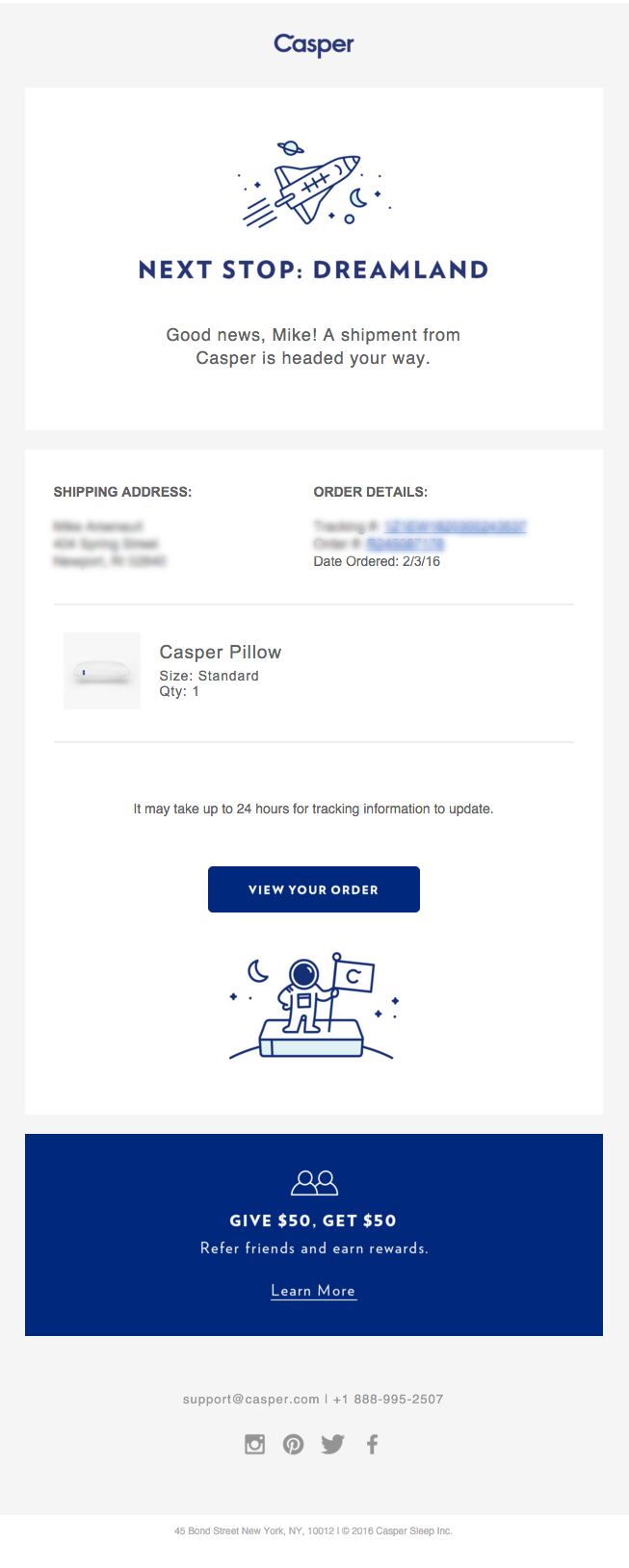EMAIL MARKETING
Everything You Need to Know About Transactional Emails

Email marketing is a mainstay for marketers. But transactional emails are a form of email marketing that brings marketing, operations, logistics, and finance teams together to communicate important information with customers.
Essentially, transactional emails initiate, confirm, facilitate, and conclude transactions related to a brand’s product or service delivery. It’s a unique channel and very different from traditional email marketing.
These emails are not sent only to subscribers simply because a customer does not need to subscribe to receive them. For the same reason, customers cannot unsubscribe to these emails.
One of the most distinguishing features of a transactional email is that the receiver is usually waiting to receive it. Whether it’s an order confirmation, invoice, or shipping update, customers expect to see these emails in their inboxes and welcome them. That’s why they have an open rate of up to 85%.
If marketing emails are sent when someone signs up to be on your list, transactional emails are triggered when a customer interacts with your product or service. They are essential elements of your buyer’s journey and often contain important and confidential information.
Let’s look at what transactional emails are, how to create them, and a few examples of brands that are doing them right.
Best Practices
Transactional emails are an important part of your customer relationship. Here are some best practices to ensure the transactional emails you send are successful.
- Mobile. Optimize the layouts to be mobile-friendly, especially emails that have numbers and important information.
- Security. Sensitive personal information like names, addresses, and payment details are a part of transactional emails, so extra layers of security are crucial and non-negotiable.
- Accessibility. Always have a plain text format option so that your transactional email can be viewed, printed, and accessed easily.
- Email address. Don’t use the same email address for your bulk marketing emails and transactional emails. Include an option to reply and arrange for replies to be forwarded to your customer service.
- Prioritize. While transactional emails can be branded, remember that their main purpose is to inform. Keep the main message upfront and easy to read.
Examples of Transactional Emails
1. Order Confirmation
One of the most obvious kinds of transactional emails is the all-important order confirmation and invoice. It details the items ordered, amounts, and tax information.
This is the first email a customer expects when they order a product or service, and so it must arrive in a timely manner and be clear and concise. The delivery timing could mean the difference between a satisfied and a disgruntled customer.
This should also be a highly personalized type of email, from the name of the receiver to the items ordered.
An important part of an order confirmation is an update on the next step. Can the customer track the shipment right away? Will you send an email when the order is shipped? Try to answer common questions within the email.
It’s also important to include links to your customer service, returns and exchange policy, and address in the email.
While it’s not a rule, it’s a great idea to design this email to look like part of your brand. Take a look at this email from Casper, which is a bit playful but doesn’t stray far from the main message.

2. Shipping Update
Letting your customers know that their item has been shipped is another kind of transactional message that is an important part of the purchase process. It lets your customer know when they can expect their delivery.
A shipped order is also a reassurance for customers. Keeping open lines of communication during and after product delivery shows that you are committed to good customer service.
This cheerful shipping update email from Fitbit fits the bill (pun intended!). It has a touch of personality and creates an atmosphere of anticipation around the product’s arrival.

3. Password Reset
As consumers, we’ve often had to reset our passwords (there are just too many to remember). The focus in these emails is security and reassurance while also being easy to navigate.
When it comes to email length, these emails are best kept short – don’t be tempted to add any marketing fluff here. This is all business and no-nonsense. Don’t forget to mention any time limits or validity periods for the reset button, and make sure the call-to-action is clear and upfront. Most people only look for the reset button and won’t read the rest of the email.
This is Jet’s simple, friendly, and confident email to reset passwords, and it’s followed by a cheeky confirmation email that we love:


Transactional emails are necessary, but that doesn’t mean they have to be boring, outdated, or bare. Along with conveying crucial information, when done right, they create trust and strengthen your customer relationships. While the messaging must be transactional, that doesn’t mean it has to be devoid of personality. Like the examples in this article, being serious doesn’t mean you can’t have a bit of fun.










